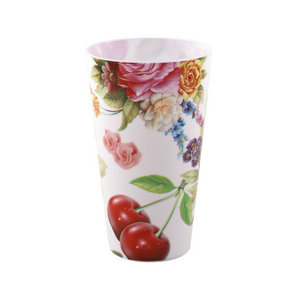

Strictly speaking, beverage bottles are not plastic, it […]
Strictly speaking, beverage bottles are not plastic, it is PVC material, because everyone is used to it as the name suggests, they all use it as plastic, this can be recycled and reused.
Recycling the beverage bottles, pulverizing and re-creating PVC particles, can be made into new beverage bottles.
What does the English at the bottom of the beverage bottle stand for? 1 stands for PET (polyethylene terephthalate): At present, general mineral water, carbonated drinks and functional beverage bottles use this material. Heat-resistant to 70°C and easily deformed.
2 stands for HDPE (high-density polyethylene): common white medicine bottles, cleaning supplies, and bath products. High temperature resistant, but not easy to clean, easy to breed bacteria, do not recycle.
3 stands for PVC (polyvinyl chloride): it is rarely used for food packaging. Difficult customized Plastic Cup to clean and easy to remain, do not recycle, do not buy if it is filled with drinks.
4 stands for LDPE (low density polyethylene): common cling film, plastic film, etc. Hazardous substances will be generated at high temperatures. Do not put the plastic wrap in the microwave oven.
5 stands for PP (polypropylene): the only plastic box that can be put in a microwave oven, and can be reused after careful cleaning.
6 stands for PS (polystyrene): This is a material used to make bowls of instant noodle boxes and foamed snack boxes. It is heat-resistant and cold-resistant, but cannot be placed in a microwave oven. Can not be used to install strong acids (such as orange juice), strong alkaline substances.
7. On behalf of other categories: it is a material that is used in large quantities and is mostly used to make milk bottles, space cups, etc. Try not to use it to hold boiling water. 1 Conventional varieties and classifications of plastics
In daily life, most of the plastics that we can directly touch or perceive are conventional general-purpose plastics, mainly including five categories: PE, PP, ABS, PVC, and PS. These five categories of plastics account for the vast majority of plastic raw materials. , The rest can basically be classified into special plastic varieties, such as: PPS, PPO, PA, PC, POM, etc., they are used in daily life products very little, and are mainly used in high-end fields such as engineering industry and national defense technology, such as Automotive, aerospace, construction, communications and other fields. According to its plasticity classification, plastics can be divided into thermoplastics and thermosetting plastics. Under normal circumstances, thermoplastic products can be recycled, while thermoset plastics cannot. According to the optical properties of plastics, they can be divided into transparent, translucent and opaque raw materials, such as PS, PMMA, AS, PC, etc. which are transparent plastics , And most other plastics are opaque plastics. There are many ways to classify plastics, which will not be introduced here.

Copyright © Taizhou Qiming Plastic Co. LTD Rights Reserved. Support by: HWAQ China Plastic Funnels Suppliers